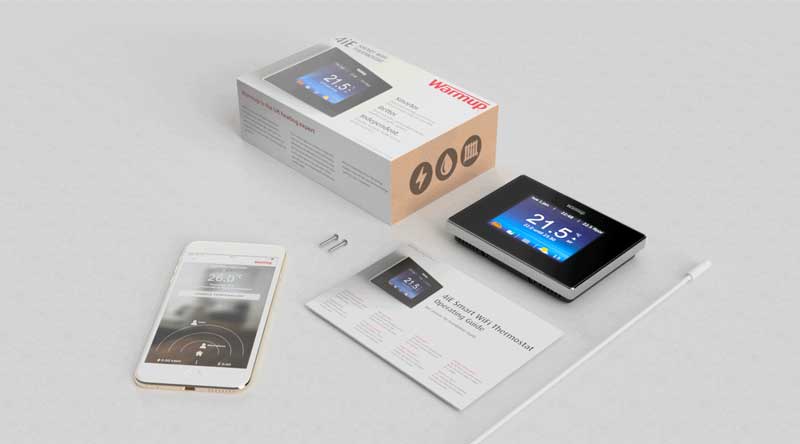Home
/
Troubleshooting
/
DCM-PRO Cable
How to Check the Resistance Readings of your Electric Floor Heating System
Welcome to our guide on testing the resistance of floor heating system wires using a digital multimeter. To ensure that your floor heating system will function properly, always test the resistance of your wires with a digital multimeter set to 200 ohms before, during and after installation. Let’s dive into the steps of how to check the resistance readings of your electric floor heating system to help you get started.
Watch the below video and follow along as a system is tested:
Subscribe to our YouTube channel here.
Warmup heating cables are constant wattage cables that should be tested on a 200-ohm scale. Always ensure resistance matches the information on the product tag/box. Each heater model has its own unique resistance reading. If at any point during one of your tests the resistance results do not match up, call Warmup.
It is very important that you record the heater model number, final core to core resistance readings, and final resistance readings each leg to ground. These records are what you will use to register your warranty.
Warmup Tip: Remove the tag from the cold tail lead of the product and tape it inside of your electrical panel for future reference.
For a record card and more information on testing refer to the installation manual.
If you purchased a Digital Multimeter from Warmup, the Alligator, you will have two connectors. Please make sure that the contacts that will be plugged into the multimeter are properly exposed.
Connect the red clip into the outlet labeled “VΩmA” and the black connector into the “COM” outlet. Turn the dial so that the indicator points to the 6 o’clock position, directly above the “200Ω” indicator.
Testing Resistance for 120V/240V Systems
IMPORTANT NOTE: Perform the testing below before connecting the heating system to a power source or only after disconnecting if already installed.
1. You will take your readings 3 times.
- Once you first remove your heating system from the box
- mid-way through the laying out of the floor heating system
- right before you connect the floor heating system to the thermostat.
2. Clip the alligator head of the black connector to the black wire of your heating system. The connect the alligator head of the red connector to the yellow wire. This is your “core to core” reading. Compare the ohm number that appears on the display to what the tag, box or installation manual state the reading should be for the model you purchased. Note: +/- 5% of the norm is acceptable.
3. Next, clip the alligator head of the black connector to the black wire of the floor heating system and the alligator head of the red connector to the yellow/green wire (neutral). You want to see the number “1” or the “infinity symbol – ∞.”. Now you will leave the red wire connected to the yellow/green wire but this time clip the black connector to the yellow wire of the floor heating system. Again, you want to see the number “1” or the infinity symbol.
In conclusion, testing the resistance of your floor heating system wires is an essential step in ensuring the proper functionality and performance of your system. By following the outlined procedures and using a digital multimeter set to 200 ohms, you can accurately measure the resistance at various stages of installation.
Remember to compare the resistance readings with the information provided on the product tag or box, as each heater model has its specific resistance values. Keep thorough records of the heater model number, core to core resistance readings, and resistance readings for each leg to ground. These records will be necessary for warranty registration.
If you encounter any deviations or discrepancies during the testing process, please don’t hesitate to reach out to Warmup for assistance. Our team is ready to provide further instructions and support to ensure the success of your floor heating system. To access our support services, simply reach out to us at 888-927-6333.


![Thumbnail [200x250]](/wp-content/uploads/Indoor-Systems-Page-Image.png)
![Thumbnail [200x250]](/wp-content/uploads/image-13.png)
![Thumbnail [200x250]](/wp-content/uploads/Projects-Image.png)